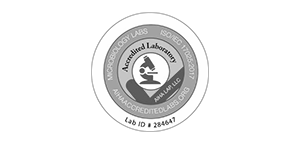
Fresh Air Benefits for Mold Exposure Relief
Welcome to our article on the benefits of fresh air for mold exposure relief. If you’ve been experiencing symptoms due to mold exposure or are concerned about the indoor air quality in your home, this section will provide valuable insights into how fresh air can alleviate your symptoms and improve your overall health.
Indoor mold growth can have various detrimental effects on our well-being, from triggering allergies and respiratory issues to causing skin irritations and other health problems. By understanding how mold spreads and learning about the role of fresh air in preventing its growth, you can take proactive measures to create a healthier living environment.
In this article, we will discuss the importance of proper ventilation and how it can help prevent mold growth. We will also delve into how fresh air can provide relief from mold-related symptoms and improve indoor air quality. From practical tips on creating a fresh air environment to exploring strategies for purifying the air you breathe, we’ve got you covered.
Key Takeaways:
- Fresh air circulation is essential for relieving symptoms caused by mold exposure.
- Fresh air helps prevent mold growth by optimizing ventilation in your living spaces.
- Breathing in fresh air can provide relief from mold-related symptoms.
- Fresh air improves indoor air quality and contributes to a healthier environment.
- Implementing proper ventilation techniques and strategies can help create a fresh air environment in your home.
Understanding Mold Exposure
Before delving into the benefits of fresh air, it is important to understand the implications of mold exposure on our health. Mold exposure can have various health effects, ranging from mild to severe, depending on individual sensitivity and the extent of exposure.
Mold Exposure Health Effects:
- Allergic Reactions: Many individuals experience allergic reactions when exposed to mold. Common symptoms include sneezing, coughing, itchy or watery eyes, and nasal congestion.
- Asthma Exacerbation: Individuals with asthma may experience worsening symptoms when exposed to mold. This can lead to increased wheezing, shortness of breath, chest tightness, and recurrent asthma attacks.
- Respiratory Infections: Prolonged exposure to mold spores can weaken the immune system and make individuals more susceptible to respiratory infections, such as bronchitis or pneumonia.
- Fungal Infections: In rare cases, certain types of mold can cause invasive fungal infections in people with weakened immune systems. These infections can affect various organs and require immediate medical attention.
- Chronic Conditions: Long-term mold exposure has been associated with the development or exacerbation of chronic conditions, including sinusitis, allergic fungal sinusitis, and hypersensitivity pneumonitis.
It is important to note that the severity and presence of symptoms can vary widely among individuals, and some individuals may be more sensitive to mold than others. If you suspect mold exposure in your environment and are experiencing any of these symptoms, it is advisable to seek medical advice for proper evaluation and guidance.
How Mold Spreads Indoors
Mold growth indoors can be a cause of concern as it not only affects the aesthetic appeal of your home but also poses health risks. Understanding how mold spreads is essential for identifying and addressing potential problem areas. By being aware of the common sources of indoor mold and the factors that contribute to its growth, you can take proactive measures to prevent its proliferation.
One of the main prerequisites for mold growth is moisture. When there is excess moisture in your home, whether due to leaks, high humidity, or poor ventilation, it creates an ideal environment for mold spores to settle and proliferate. Moisture sources can include:
- Leaky pipes and plumbing fixtures
- Roof leaks and water seepage
- Flooding or water damage
- Condensation on windows, walls, or ceilings
In addition to moisture, organic materials provide nourishment for mold to grow and spread. Common indoor mold sources can include:
- Damp carpets and upholstery
- Wood and paper products
- Fabrics and textiles
- Cardboard and wallpaper
It’s important to note that mold can grow in hidden areas as well, such as behind walls, under flooring, or within HVAC systems. These hidden mold sources can be particularly worrisome as they may not be easily visible, leading to prolonged exposure and potential health issues.
By being vigilant and addressing any sources of moisture promptly, you can help prevent mold growth in your home. Regular inspections, proper ventilation, and controlling humidity levels are key in maintaining a mold-free environment. In the next section, we will explore how fresh air plays a vital role in mold prevention and overall indoor air quality.
| Common Sources of Indoor Mold | Factors Contributing to Mold Growth |
|---|---|
| Leaky pipes and plumbing fixtures | Excess moisture |
| Roof leaks and water seepage | Poor ventilation |
| Flooding or water damage | High humidity levels |
| Condensation on windows, walls, or ceilings | Presence of organic materials |
Table: Common Sources of Indoor Mold and Factors Contributing to Mold Growth
The Role of Fresh Air in Mold Prevention
Proper ventilation is crucial in preventing mold growth and reducing its impact. When indoor air becomes stale and stagnant, it creates an environment conducive to mold growth. However, with adequate fresh air ventilation, you can significantly minimize the risk of mold taking hold in your living spaces.
Fresh air circulation helps to prevent mold in multiple ways. Firstly, it helps to control indoor humidity levels. Mold thrives in humid environments, so by introducing fresh air, you can reduce moisture buildup and create an inhospitable environment for mold spores to grow.
Furthermore, fresh air ventilation improves indoor air quality by removing pollutants and allergens that can contribute to mold growth. It helps to dilute and disperse airborne mold spores, reducing their concentration and minimizing the chances of them settling onto surfaces and causing mold growth.
To optimize ventilation for maximum effectiveness, start by opening windows and doors regularly to allow fresh air to enter your home. Cross-ventilation, where you create a flow of air by opening windows on opposite sides of a room, can enhance the circulation of fresh air throughout your living spaces.
Additionally, consider installing mechanical ventilation systems, such as exhaust fans in bathrooms and kitchens, to remove excess moisture and improve air exchange. These systems can be particularly beneficial in areas prone to high humidity, such as bathrooms and laundry rooms.
Regularly cleaning and maintaining your ventilation systems is also essential. Ensure that filters are clean and free from debris, as clogged filters can impede air circulation and promote mold growth. Proper ventilation, combined with regular maintenance, creates an optimal environment where mold is less likely to thrive.
Mold Prevention Through Fresh Air Ventilation: Tips and Strategies
To further enhance mold prevention through fresh air ventilation, consider implementing the following tips:
- Utilize window screens to prevent the entry of insects and other outdoor contaminants while allowing fresh air to flow in.
- Monitor and control indoor humidity levels using dehumidifiers or air conditioners with humidity controls.
- Avoid overwatering plants, as excessive moisture can contribute to indoor humidity and mold growth.
- Ensure that air vents, including those for HVAC systems, are unobstructed to allow for proper air circulation.
- Regularly inspect your home for any water leaks or moisture intrusion sources and address them promptly.
- Consider using natural ventilation techniques, such as opening windows during periods of low outdoor humidity and avoiding the use of synthetic air fresheners that can contribute to indoor air pollution.
By prioritizing fresh air ventilation and implementing these strategies, you can significantly reduce the risk of mold growth and create a healthier living environment for you and your family.
Fresh Air and Mold Symptom Relief
Breathing in mold spores can have detrimental effects on your health, especially if you are sensitive to mold or have existing respiratory conditions. The good news is that fresh air can provide significant relief from these mold-related symptoms, offering a natural and accessible solution to improve your overall well-being.
When you are exposed to mold, your body may react with various symptoms such as coughing, wheezing, sneezing, nasal congestion, and itchy or watery eyes. These symptoms can be bothersome and impact your quality of life. By incorporating fresh air into your indoor environment, you can help alleviate these symptoms and promote a healthier living space.
One of the key benefits of fresh air is its ability to dilute and disperse mold spores, reducing their concentration in your home. Opening windows and allowing fresh air to circulate can help flush out mold particles, preventing them from settling and exacerbating your symptoms.
Additionally, fresh air promotes better air quality by increasing ventilation. This helps remove stagnant air and the associated mold spores, dust, and other contaminants that can accumulate in enclosed spaces. By replacing stale indoor air with fresh outdoor air, you create a healthier environment that supports respiratory health and reduces the risk of mold-related symptoms.
Furthermore, fresh air has a natural cooling and dehumidifying effect. Mold thrives in damp environments, and by improving air circulation, you can help reduce moisture levels in your home. This inhibits mold growth and creates an environment that is less favorable for mold spores to multiply and cause adverse health effects.
Let’s take a moment to appreciate the benefits of fresh air with the following table:
| Benefits of Fresh Air for Mold Symptom Relief |
|---|
| Eases respiratory symptoms caused by mold exposure |
| Dilutes and disperses mold spores, reducing their concentration indoors |
| Promotes better indoor air quality by removing contaminants |
| Reduces moisture levels, inhibiting mold growth |
By incorporating fresh air into your daily routine, you can harness its powerful effects on mold symptom relief and overall well-being. Whether it’s enjoying outdoor activities, opening windows for fresh air circulation, or using tools like air purifiers and dehumidifiers, it’s important to prioritize fresh air in your quest for a healthier indoor environment.
Improving Indoor Air Quality
Mold growth not only affects physical health but also contributes to poor indoor air quality. Breathing in mold spores can lead to respiratory issues and allergies, exacerbating existing conditions and lowering the overall air quality in your home. To combat these problems, it is crucial to take proactive steps to improve indoor air quality and ensure a healthier living environment.
One effective method for enhancing indoor air quality is by incorporating fresh air into your home. Opening windows and doors allows for natural ventilation, allowing fresh air to circulate and replace stagnant, mold-laden air. This helps dilute and remove airborne pollutants, reducing the presence of mold spores and other harmful substances in your living spaces.
In addition to fresh airflow, air purification systems are another valuable tool for improving indoor air quality. These devices filter out airborne contaminants, including mold spores, dust, pollen, and bacteria, ensuring that the air you breathe is clean and safe. Air purifiers come in various types, such as HEPA filters, activated carbon filters, and UV germicidal lamps, each targeting specific pollutants to provide comprehensive purification.
Creating a Fresh Air Environment
To maintain clean indoor air and prevent mold growth, it is essential to establish a fresh air environment. Here are some strategies to consider:
- Regularly open windows and doors to allow fresh air to circulate throughout your home.
- Install exhaust fans in high-moisture areas like bathrooms and kitchens to reduce humidity and prevent mold formation.
- Consider investing in an air purifier that suits your specific needs and the size of your living spaces.
- Keep your home clean and clutter-free to minimize dust accumulation and potential mold growth areas.
- Control indoor humidity levels by using dehumidifiers or air conditioning units.
- Change and clean air filters regularly to ensure optimal performance.
By implementing these strategies and incorporating fresh air and air purification systems into your home, you can significantly improve indoor air quality, reduce the risk of mold growth, and breathe cleaner, healthier air.
Creating a Fresh Air Environment
In order to minimize mold growth potential and ensure proper air circulation, implementing practical strategies and tips to create a fresh air environment in your home is essential. By optimizing the flow of fresh air indoors, you can improve indoor air quality and reduce the likelihood of mold-related issues. Here are some effective fresh air strategies and mold prevention tips:
- Open windows regularly: Make it a habit to open your windows for a few minutes every day, even during colder months. This allows for fresh air to circulate and helps remove indoor pollutants and moisture that can contribute to mold growth.
- Use exhaust fans: Install exhaust fans in your kitchen, bathroom, and laundry area to remove excess humidity and prevent moisture build-up. Remember to use them when cooking, showering, or doing laundry.
- Monitor indoor humidity levels: Invest in a hygrometer to measure the humidity levels in your home. Aim for humidity levels below 50% to discourage mold growth. If necessary, use dehumidifiers or air conditioners to reduce moisture.
- Keep your home clean and dry: Regularly clean and dry areas prone to moisture, such as bathrooms and kitchens. Wipe down any condensation on windows or surfaces immediately to prevent mold formation.
- Inspect and repair leaks: Regularly inspect your plumbing system for leaks and repair them promptly. Leaking pipes or roofs can introduce moisture into your home, creating an ideal environment for mold.
- Avoid carpeting in moisture-prone areas: Carpets can trap moisture, making them susceptible to mold growth. Opt for hard flooring in areas prone to water exposure, such as bathrooms and basements.
- Use mold-resistant products: When remodeling or renovating your home, choose mold-resistant building materials such as mold-resistant drywall or paint. These products are designed to inhibit mold growth.
Implementing these fresh air strategies and mold prevention tips not only helps create a healthier living environment but also minimizes the risk of mold-related issues. By incorporating these practices into your daily routine, you can enjoy the benefits of fresh air and reduce the chances of mold growth in your home.
| Fresh Air Strategies | Mold Prevention Tips |
|---|---|
| Open windows regularly | Use exhaust fans |
| Monitor indoor humidity levels | Keep your home clean and dry |
| Inspect and repair leaks | Avoid carpeting in moisture-prone areas |
| Use mold-resistant products |
Conclusion
In conclusion, fresh air is a powerful ally in the fight against mold exposure. By implementing proper ventilation techniques, you can significantly alleviate symptoms and improve the overall quality of your indoor air. When fresh air circulates effectively, it helps minimize the likelihood of mold growth, creating a healthier environment for you and your loved ones.
One of the key benefits of fresh air is its ability to reduce mold-related symptoms. Breathing in mold spores can trigger various health issues, especially for those with mold sensitivity or respiratory conditions. By allowing fresh air to flow into your living spaces, you can provide relief and promote better well-being.
Moreover, fresh air plays a critical role in preventing mold growth. Ventilation is essential in controlling moisture levels, which is a significant factor contributing to mold development. By ensuring proper air circulation and reducing humidity, you can create an unfavorable environment for mold to thrive.
Creating a fresh air environment in your home is achievable with a few simple strategies. Opening windows regularly, using exhaust fans in areas prone to moisture, and maintaining an optimal humidity level can contribute to effective ventilation. By adopting these practices, you can enhance your living space’s freshness and minimize the risk of mold infestation.
FAQ
How can fresh air help with mold exposure relief?
Fresh air can help alleviate symptoms caused by mold exposure by diluting and removing mold spores from the indoor environment. It improves ventilation, reduces humidity, and minimizes the concentration of mold particles in the air, providing relief for individuals with mold sensitivity or respiratory conditions.
What are the potential health effects of mold exposure?
Mold exposure can lead to a range of health effects, including allergic reactions, respiratory problems, asthma exacerbation, sinus congestion, coughing, sneezing, watery eyes, and skin irritation. Prolonged exposure to mold may also contribute to the development of more severe health issues, such as fungal infections and immune system disorders.
How does mold spread indoors?
Mold spreads indoors through spores that are carried by air currents or attach to people, pets, or objects. It requires moisture, a nutrient source, and suitable temperatures to grow and reproduce. Common sources of indoor mold include high humidity levels, water leaks, flooding, condensation, and damp building materials.
What is the role of fresh air in mold prevention?
Fresh air plays a vital role in mold prevention by improving air circulation and reducing moisture levels in indoor spaces. Adequate ventilation helps remove excess humidity and prevents the buildup of moisture that can fuel mold growth. Proper airflow also assists in drying out damp areas and discouraging mold colonization.
How can fresh air provide relief from mold-related symptoms?
Fresh air can provide relief from mold-related symptoms by diluting the concentration of mold spores in the air and improving overall indoor air quality. Breathing in fresh air helps reduce irritation to the respiratory system, alleviating symptoms such as coughing, sneezing, congestion, and itchy eyes that can be triggered by exposure to mold spores.
How does fresh air improve indoor air quality?
Fresh air improves indoor air quality by diluting pollutants, including mold spores, volatile organic compounds (VOCs), and other indoor airborne contaminants. It helps remove stagnant air and replaces it with clean, oxygen-rich air from outside, reducing the concentration of pollutants and providing a healthier environment to breathe.
What are some strategies for creating a fresh air environment?
To create a fresh air environment, you can open windows and doors to promote natural ventilation, use exhaust fans in kitchens and bathrooms to remove excess moisture, avoid over-watering indoor plants, maintain proper humidity levels (around 30-50%), and ensure regular maintenance of HVAC systems to prevent mold growth and promote air circulation.
Why is proper ventilation important in preventing mold growth?
Proper ventilation is important in preventing mold growth because it helps control moisture levels and reduces humidity, which are essential conditions for mold to thrive. Good airflow and ventilation discourage the buildup of dampness, condensation, and stagnant air, effectively minimizing the likelihood of mold growth in indoor spaces.







